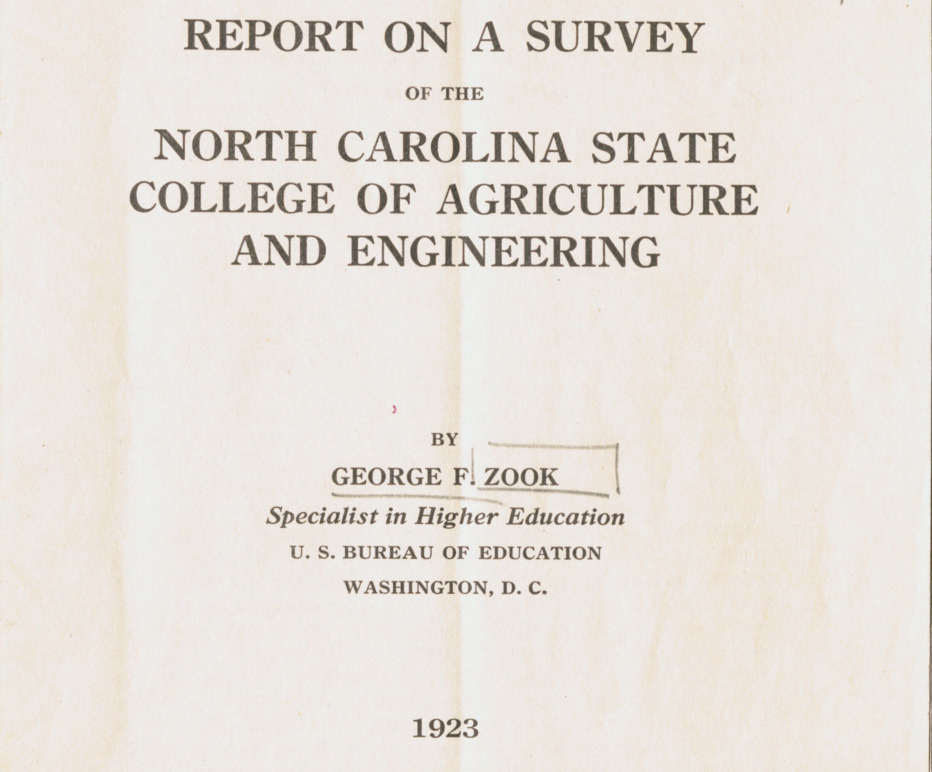
Zook Report, 1923
This post was authored by Special Collections' Graduate Assistant Allison Hall and edited by Taylor Wolford.
In the years following the conclusion of World War I, the number of students and faculty at North Carolina State University rose quickly. During this period, the relationship between the State of North Carolina and the university (formerly known as the North Carolina State College of Agriculture and Engineering) underwent further development, especially in the realm of agricultural research. In this context of institutional change and growth, college President Wallace Carl Riddick contacted the United States Bureau of Education in September 1922 and requested a specialist visit the university to assist with plans for administrative reorganization (Zook Report, 1923, pg. 3). Riddick believed that changes to the college would not only better serve its growing student body, but also align the school with emerging technologies and educational philosophies. These changes would further prepare the college for a new period of development and success.
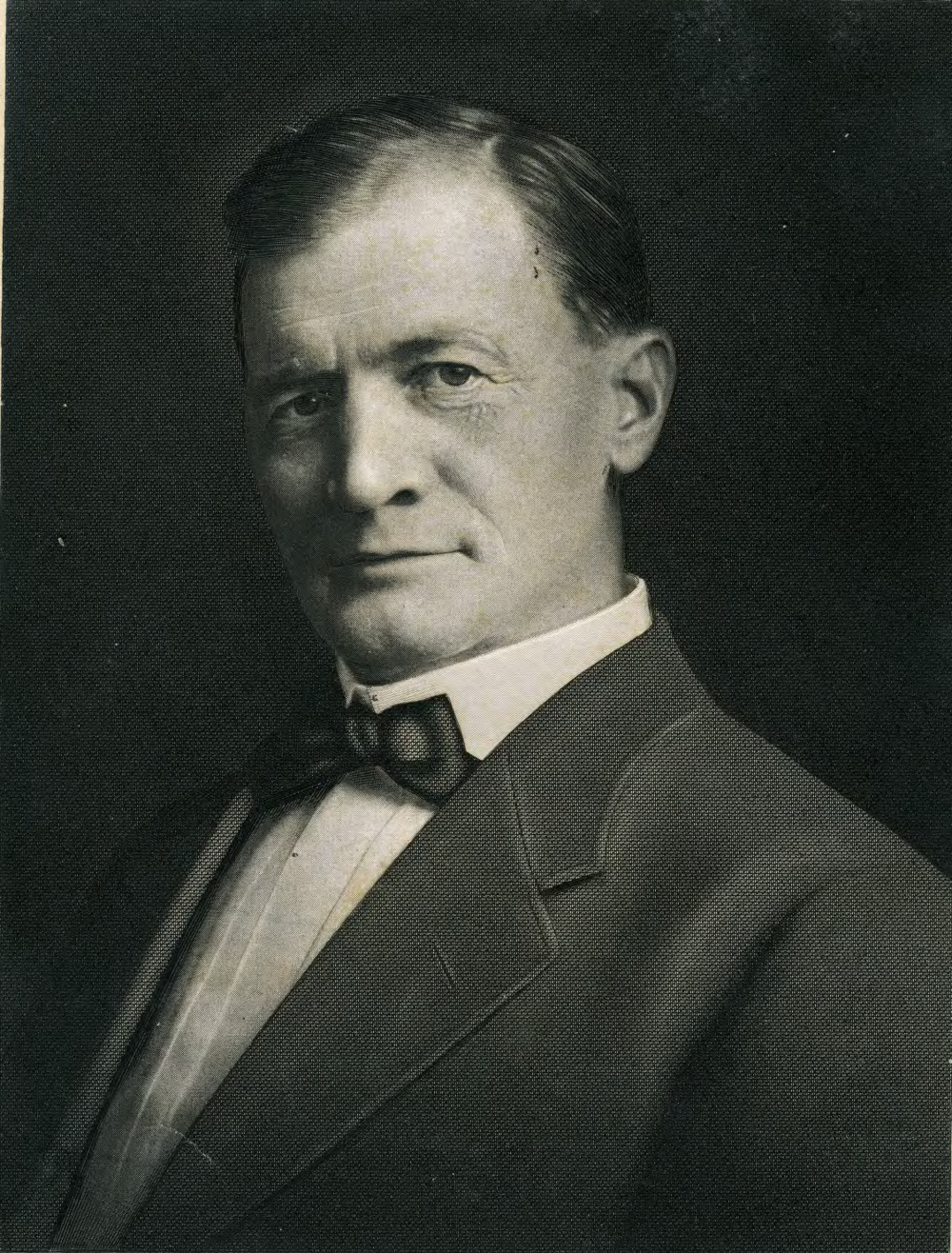
George Zook, a specialist in higher education at the Bureau of Education, arrived at North Carolina State College of Agriculture and Engineering in March 1923. He spent one week gathering data for his report and recommendations to the college. This research primarily consisted of conversations with Riddick, other administrators, and faculty members, whom he described as “willing and anxious” to provide information about the current state of the college (Zook Report, 1923, pg. 4).
Zook sent the first draft of his report to President Riddick in early April 1923. The most influential recommendation in the report encouraged the college to create four distinct schools, each with its own Dean. Zook suggested that these divisions within the college should be Agriculture, Engineering, General Science, and Social Science and Business Administration. In each school, there would be more specialized academic departments for students to pursue their interests. He also advocated for the integration of teaching, research, and extension work, remarking that this would increase the efficiency of work done by college faculty:
“Any unnatural barrier which is erected between research in agriculture and the teaching of agriculture is like cutting off a stream from its source and expecting it to continue to flow. The experiment station is the fountain of agricultural knowledge, and the college [is] the channel through which it flows to students at the institution. Each is necessary to the other” (Zook Report, 1923, pg. 6).
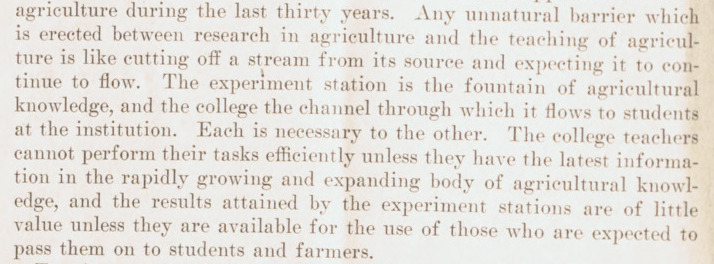
In the name of efficiency, Zook strongly recommended that all state Agricultural Extension Service work be done through the college. This setup, he argued, would prevent duplication of research conducted by the North Carolina Department of Agriculture. Additionally, Zook called for a reorganization of the college’s administration, including the creation of an Advisory Council to the President. Departing from the college’s focus on vocational education, Zook emphasized the importance of higher education in cultivating well-rounded individuals. This included founding academic departments in the liberal arts, building a gymnasium for students, and decreasing the number of credit hours required to graduate, thus allowing students to devote more time to extracurricular activities.
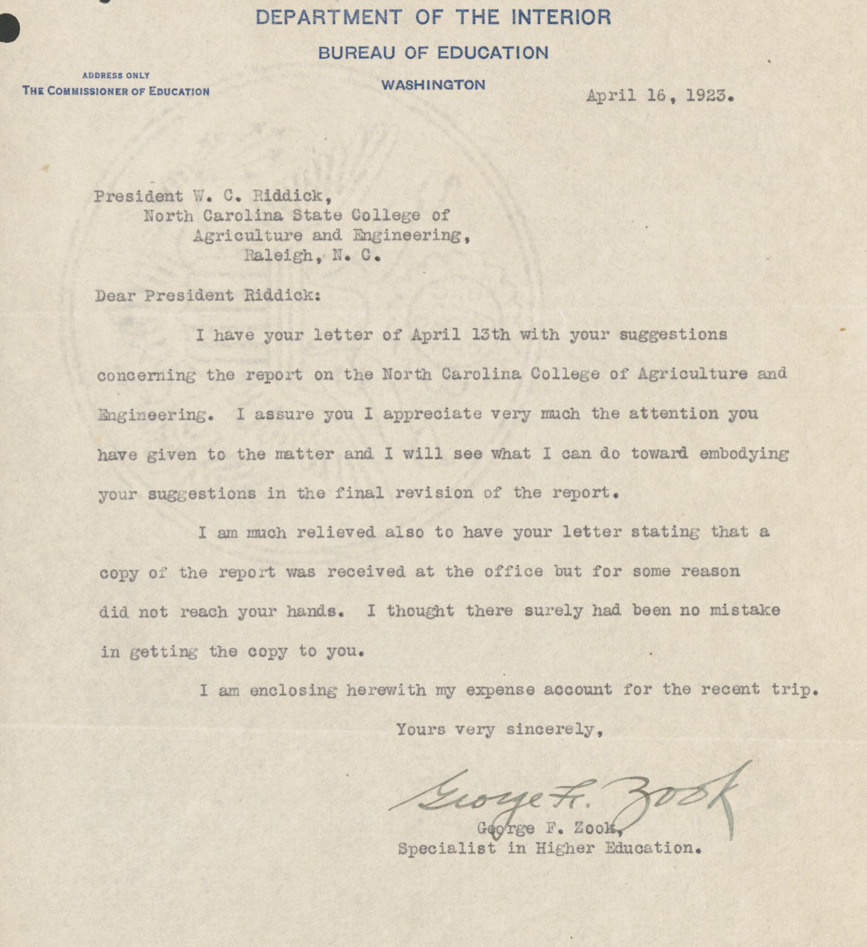
Zook met with the North Carolina State College Executive Committee of the Board of Trustees on April 10th, 1923, and his report was welcomed as organizational changes to the college began. To facilitate these changes, Riddick stepped down from his role as president to become Dean of Engineering, paving the way for Eugene Clyde Brooks to become the college’s fifth president. Brooks submitted a plan for reorganization to the Board of Trustees ten days into his term (Reagan, 1987, pg. 67). Under Brooks’ leadership, three divisions were created in the college: the School of Agriculture, the School of Engineering, and the School of Science and Business.

Despite the administration’s enthusiastic adoption of many of Zook’s recommendations, the transition was not uniformly smooth. Tension surrounding institutional changes and authority emerged, for example, between new Dean of Agriculture Benjamin Wesley Kilgore and President Brooks, eventually leading to the former’s resignation in 1925 (Reagan, 1987, pg. 70-71). Such difficulties at the School of Agriculture were heightened by the school’s strained relationship with the North Carolina Department of Agriculture. Despite United States Secretary of Agriculture Henry Wallace’s call in 1923 that all extension work be conducted by land-grant colleges, authority over agricultural extension services remained divided between the college and the NC Department of Agriculture until the late 1930s (Reagan, 1987, pg. 68-69).
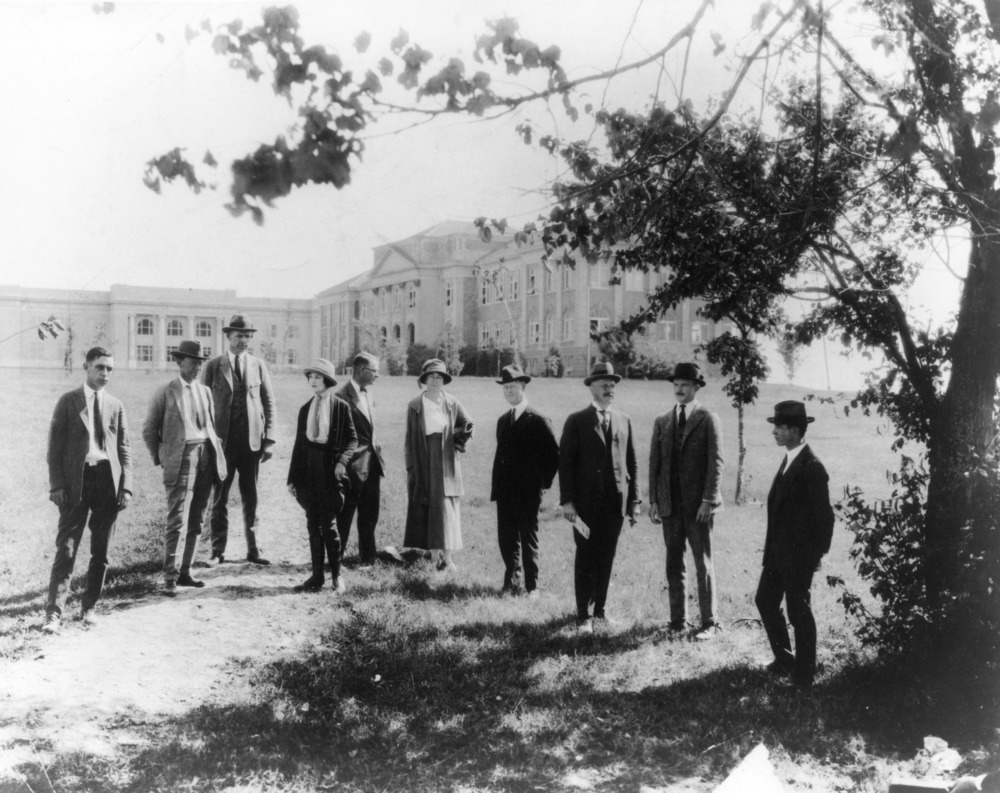
The new School of Science and Business, home of the college’s new liberal arts curricula, experienced rapid expansion at first. The School of Science and Business later removed all departments within the school that were not directly related to science or business, including the journalism, sociology, and history departments (Reagan, 1987, pg. 75). Compared to the two other schools, the School of Engineering had relative success in its new organizational status, and departmental offerings expanded to include ceramic, chemical, architectural, and industrial engineering (Reagan, 1987, pg. 73).
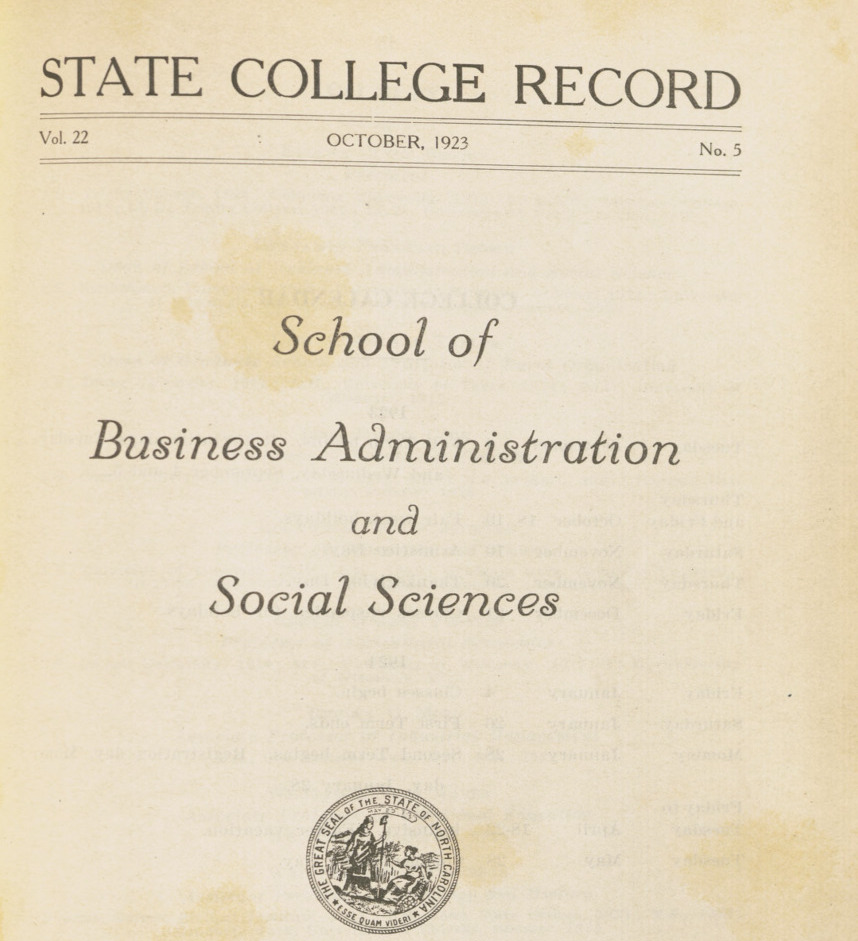
Throughout the 1920s, three additional divisions were created: The School of Textiles, the School of Education, and the Graduate School (Reagan, 1987, pg. 76). The Engineering Experiment Station was founded in addition to the General Extension Service. The college began holding courses in the summer for the general public, offering the use of its resources to the wider community.
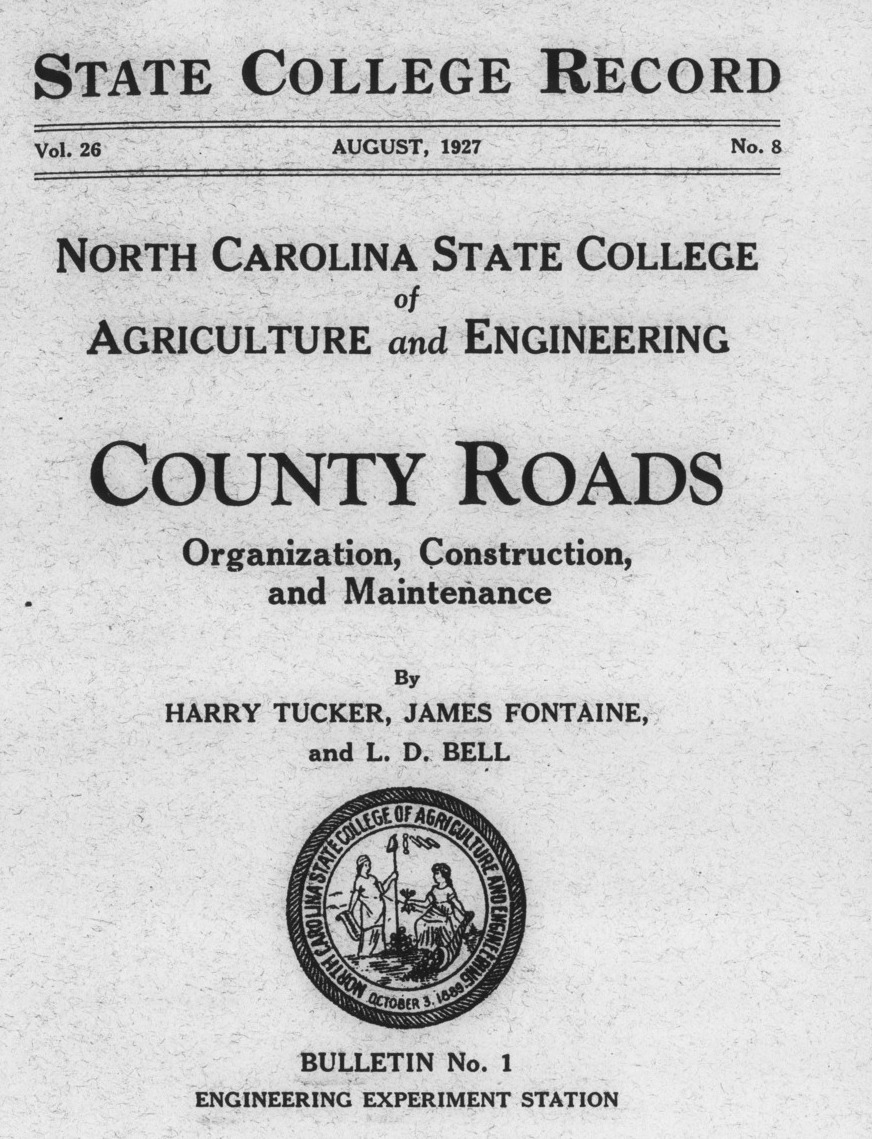
Some structural developments in response to the Zook Report included a new gymnasium and the creation of a centralized library system. The new gymnasium, named after alum Frank Thompson, was constructed in 1925, and departmental libraries were centralized at the new D.H. Hill Jr. Library. Other cultural developments in response to the Zook Report included dormitory reforms, the establishment of a freshman orientation program, and support of student publications and musical endeavors. By the end of the 1920s, the Zook Report had become crucial in encouraging organizational changes to the North Carolina State College of Agriculture and Engineering, and Zook’s recommendations ushered the college into a new and modern stage in its development.
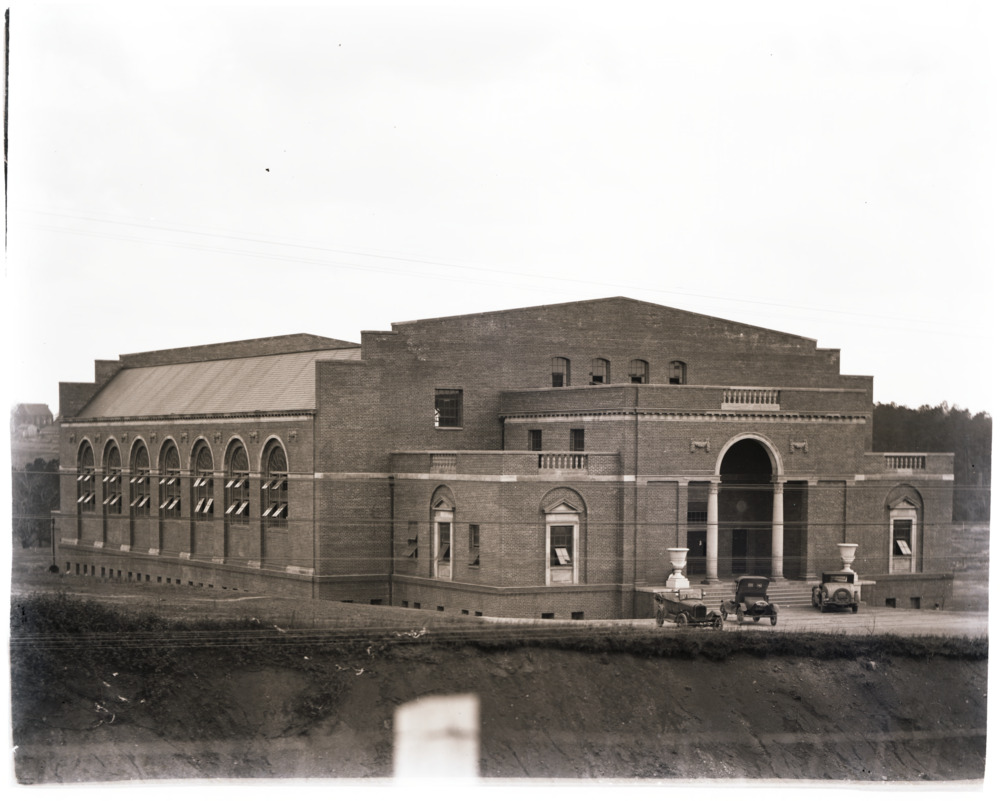
If you have any questions or are interested in viewing Special Collections materials, please contact us at library_specialcollections@ncsu.edu or submit a request online. The Special Collections Research Center is open by appointment only. Appointments are available Monday–Friday, 9am–6pm and Saturday, 1pm–5pm. Requests for a Saturday appointment must be received no later than Tuesday of the same week.